Every time Anakoni asked to wear masculine Indian clothing, they would be told no.
So they would sometimes sneak their younger brother’s kurta pajama out of his room, and try it on in their room - even if it didn’t fit.
“I would’ve been 11 or 12 when I first started doing it and I remember it feeling good,” the 21 year old says.
“I guess I didn’t know it at the time, but I felt a sense of gender euphoria.”
Finding yourself through the clothes you wear is a formative journey for any gender diverse person. But sometimes, that journey can be made more complicated by clothing that is traditional, cultural - and gendered.
Anakoni, who asked for their last name not to be included for privacy reasons, is a student living in Tāmaki Makaurau. Their parents are from northern India and moved to Aotearoa roughly 30 years ago.
They identify as non-binary/queer, were assigned female at birth and accept all pronouns, but prefer she/they.
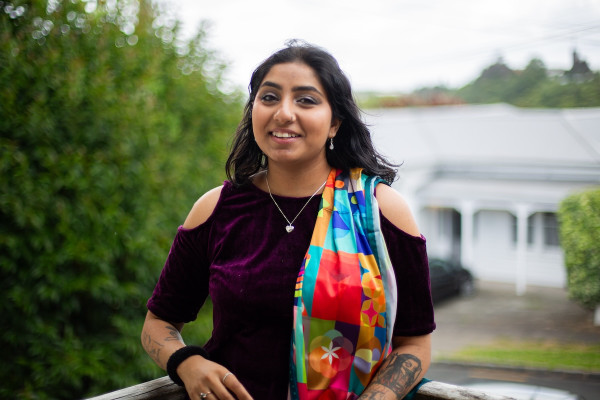
Growing up, Anakoni wore a lot of feminine Indian clothing. This included suits, which feature a long tunic top, a big puffy pair of pants and a scarf, and lehenga, which is usually a two-piece garment with an embroidered sparkly skirt.
However, Anakoni’s interest always leaned more towards the masculine garments such as kurta pajamas – the male-equivalant of a suit – which also has a long tunic, sometimes paired with big puffy pants.
Anakoni considers themself on a journey to reconcile the relationship between their queerness and Indian whakapapa.
“I used to think there was a disconnect between the two for the longest time.”
“Just because I'm queer doesn't mean that I'm not also embracing my culture and being a very active part of my community,” Anakoni says.
“Knowing my language (Hindi and Punjabi) and the traditions, that's what connects me to my culture and me being Indian.
“My queerness is just another part of me. So is me being Indian. And I don't see why those have to be separate.”
Anakoni showed us three different outfits that tell a story of their journey to feeling more comfortable in the cultural clothing they wear.
Outfit #1: Kmart hoodie
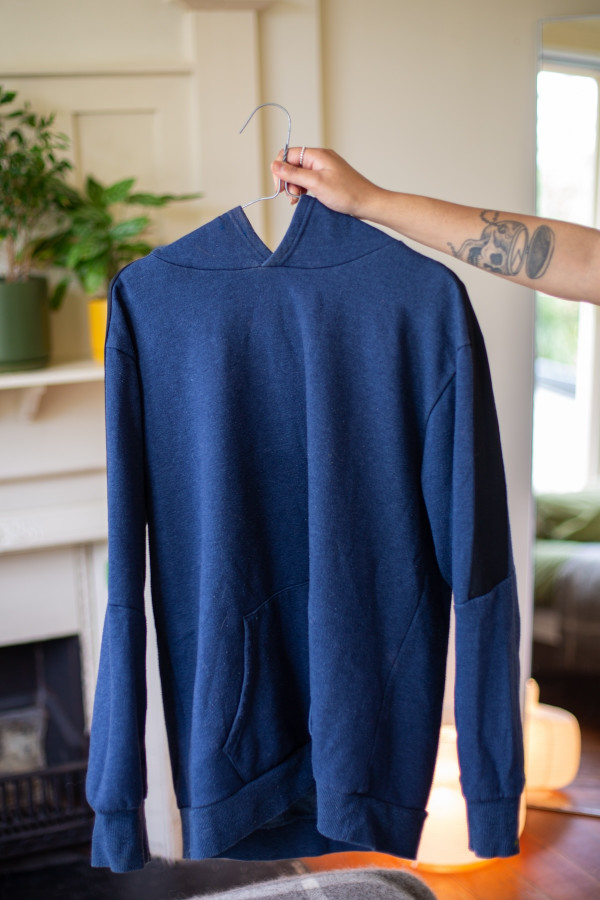
“I got this hoodie three years ago. I was at Kmart with my dad and my younger brother and I saw this hoodie in the men's section,” Anakoni says.
“I remember thinking, ‘Fuck, that looks comfy’. So I said ‘Hey, Dad, can I get this hoodie?’ and he goes, ‘No, it's in the men’s section’.
“And my younger brother goes, ‘Dad, can I have the hoodie?’. And he goes ‘Yeah, okay.’”
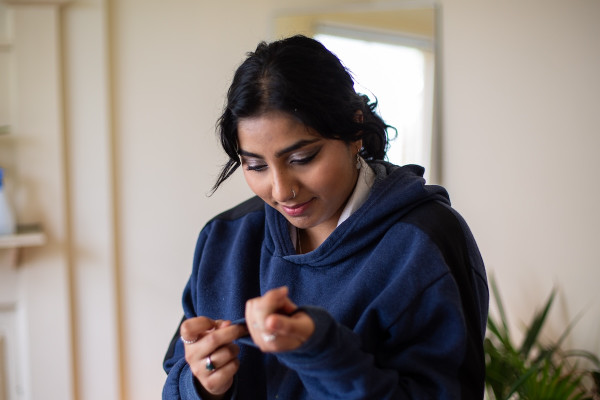
“Afterwards, my brother gives me the hoodie in the car. That is the sweetest thing he could have done for me in that moment.
“I was out to him and not my dad, at the time. It meant a lot to me.”
“I used to wear this hoodie all the time. You can see it's got like paint and shit on it because I used to wear it while doing my art,” Anakoni says.
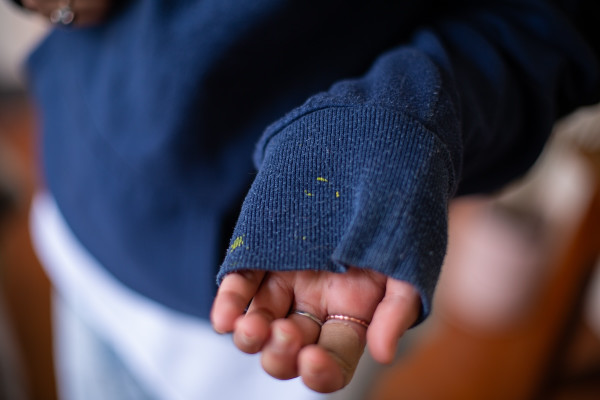
“When I wear it, I always think of my younger brother, and the kindness that he showed me in that moment.”
Outfit #2: My brother’s kurta pajama
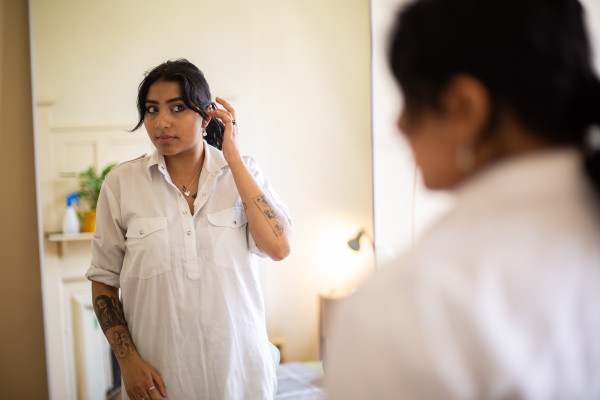
“This kurta pajama belongs to my younger brother. He usually wears this one for the traditional Punjabi dance performances he does.
“I just went into his closet and grabbed it this morning.
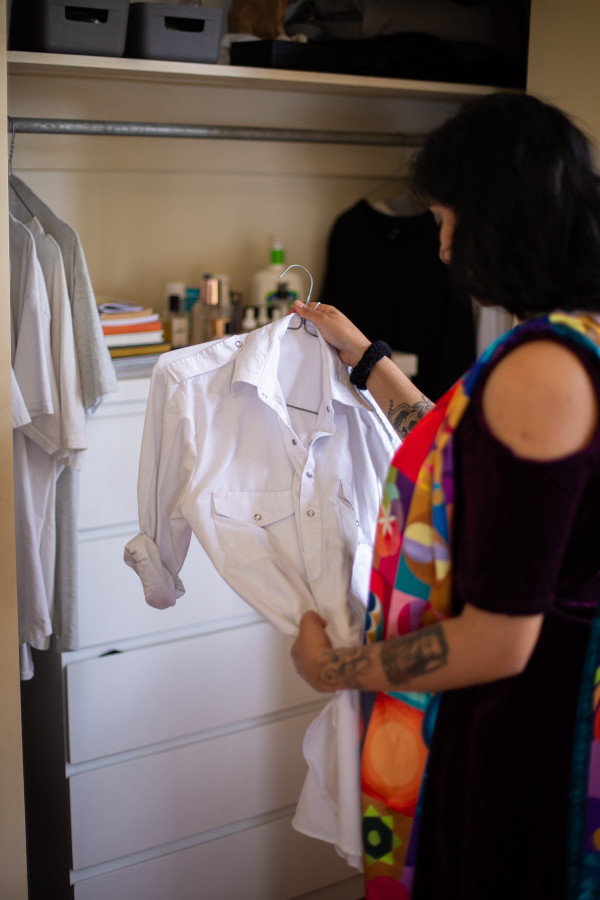
“It feels really good to be able to wear something and not question my entire existence over it.
“I just feel comfortable in it, instead of constantly questioning ‘Do I look good? Do I feel good?’, No, I do feel good. And I can just exist in that space. I don't have to think about anything else.”
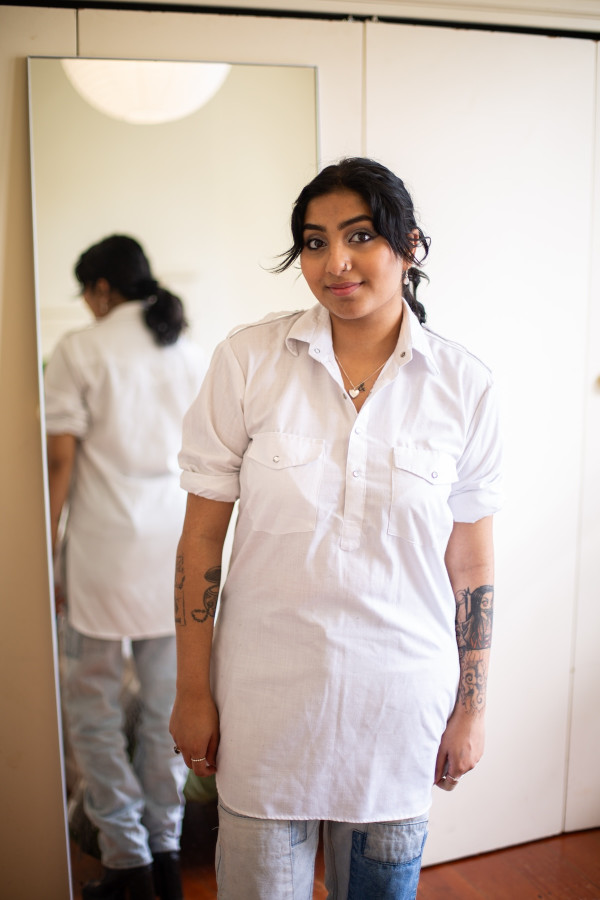
“When I left the house wearing this this morning, it was the third time my parents saw me wearing a kurta pajama,” they say.
“I walked out of the house wearing this and they said, ‘You know what, that looks really nice on you’. And I thought ‘This is a win, not just for me, but for every Indian queer out there.’”
Outfit #3: Salwar kameez
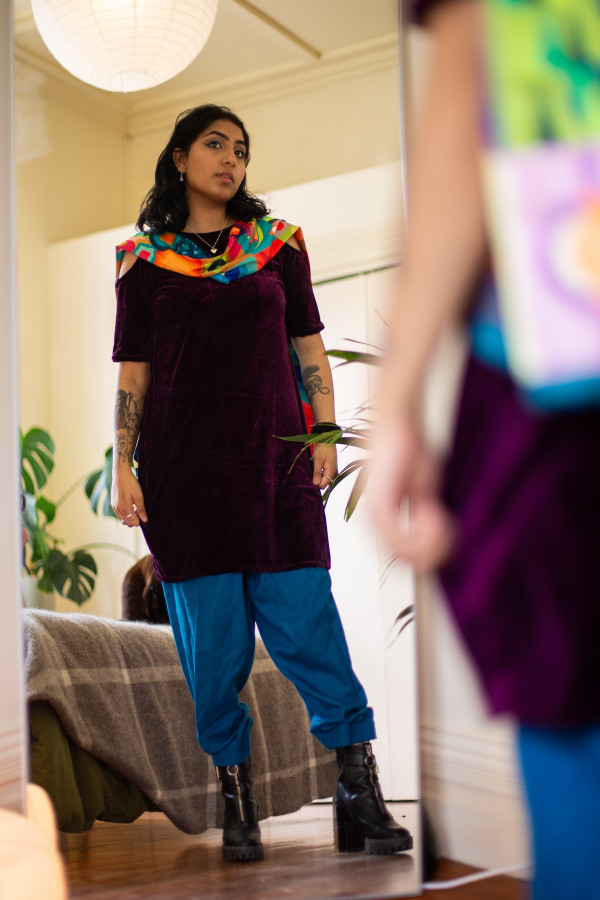
“I put this outfit together myself. It’s meant to look like a salwar kameez, or a suit, which is what we call it in Punjabi – which is traditionally worn by female-presenting people,” Anakoni says.
“I like that I put this outfit together myself. Usually, salwar kameez, or suits, come in sets. So you’ll have the pants and top and everything all match.
“But for Diwali, I didn't really want to wear it the way it was intended to wear. I wanted to wear it in my own way,” she says.
“I like this purple dress. I liked the fact that it has cold shoulders.
“And I liked that I was able to bring colours in from the chunni (the scarf) and make them match the salwar kameez.
“So the blue matches the salwar (the trousers) and the purple matches the kameez (the dress/tunic top).
“It’s not as feminine as a lehenga would be, with the big skirt. It's very similar to the kurta pajama, it's a long tunic with a pair of pants. The only difference is it has a scarf with it.”
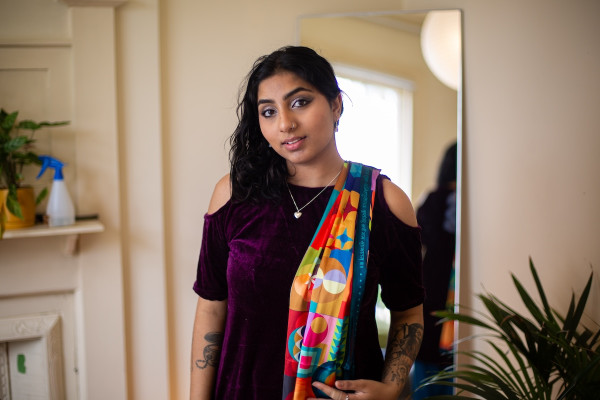
Anakoni says now, they do feel more comfortable expressing their gender identity in Indian clothes.
“Sometimes I will wear a lehenga when I feel more effeminate and sometimes I'll wear a kurta pajama when I feel more masculine,” she says.
“But this is the middle ground for me. This is where I feel like I can be androgynous and still wear traditional Indian clothing.”
More stories:
When your South Asian identity and queer identity don't feel compatible
"It’s still painful for me to revisit, because it was something that was supposed to be precious.”
Being queer in a small town doesn’t have to be shit
“If I hadn't moved to small town New Zealand, my life would be a lot smaller.”
What my chosen whānau means to me
"For some people, chosen family is all they have."